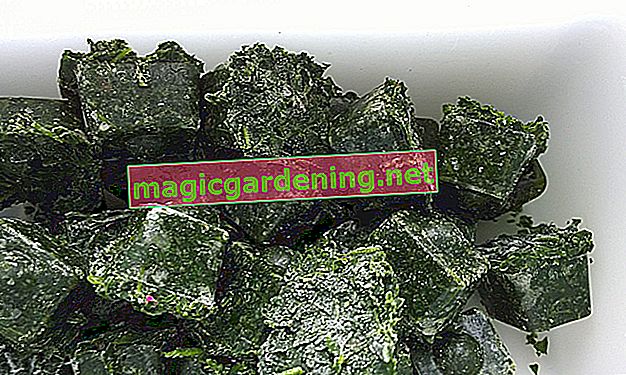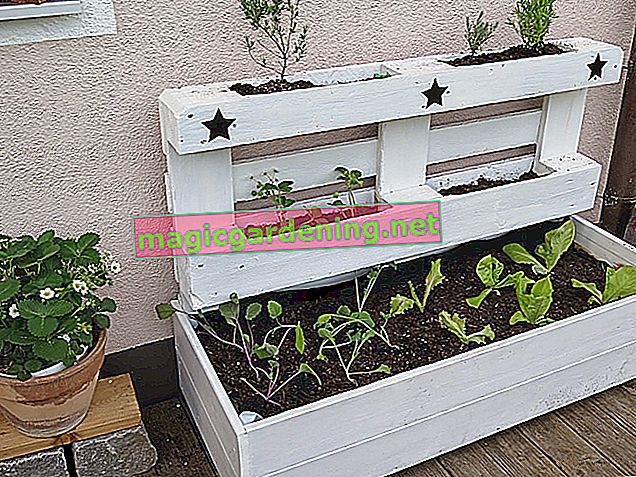
Wild meadows want to grow undisturbed
Wild meadows have a very large biodiversity - more than 100 different flowers and herbs can thrive on a poor meadow. However, this only applies if you leave the meadow largely alone. Meadows in particular should not be fertilized or otherwise processed, only one mowing once or twice a year is advisable. Wild meadows need a lot of rest for undisturbed growth - after all, they are “wild” cultivated plants that are not used to all-round care. However, you need a little patience until the newly created meadow has turned into a lush sea of flowers. The plants need an average of three to five years to establish themselves in their new biotope. Until then, you may have to re-sow from time to time.
also read
- A paradise for butterflies and bees - create a poor meadow
- Creating a wildflower meadow - How to ensure as much colorful variety in the garden as possible
- Banana varieties: a colorful and delicious variety
Preparation of the soil
The easiest way to create the wild meadow is if you do not simply sow the seed mixture on an existing meadow or lawn - grass is extremely assertive and will repeatedly displace the more sensitive wild plants due to its rapid growth. Therefore, before sowing, prepare the soil as follows if possible:
- Mow the grass as short as possible.
- Remove the upper soil layer, for example with a flat spade or by milling.
- Also carefully remove any roots that you can get hold of.
- Dig up the ground.
- If you want to create a poor meadow, you must also make the soil lean.
- To do this, mix in additional sand with the soil.
- Acid soils are neutralized with lime.
- Rake and rake the surface nice and flat so that the soil is as fine as possible.
Make sure that the location for the future wild meadow is as sunny as possible.
Sow flower seeds
Once the preparations have been completed, you can start sowing the wild flower seeds. Most wildflowers and herbs are light germs, which means that they should not be covered with earth, but just pressed a little. On the other hand, many wild plants belong to the so-called cold germs that do not emerge within a few days after sowing, but only after winter or a longer cold period. When sowing, proceed as follows:
- Mix the usually very fine seeds with a spreading aid (e.g. fine sand).
- This enables a better distribution of the seeds.
- Scatter the seeds broadly.
- With the help of a harrow, the blade of a hoe, or boards tied under your shoes, press the seeds well into the ground.
- Keep the meadow area as moist as possible.
Avoid buying standard wild meadow mixes in the garden center. These seed mixtures usually do not contain game, but a colorful mix of cultivated plants - most of which are not even indigenous. It is better to use special seed mixtures (which often even match the regional flora) from specialist shops.
Tips & Tricks
About one to two grams of seeds are calculated per square meter. However, it is better to plant more seeds, because the germination rate of wild plants is significantly lower than that of cultivated plants.








